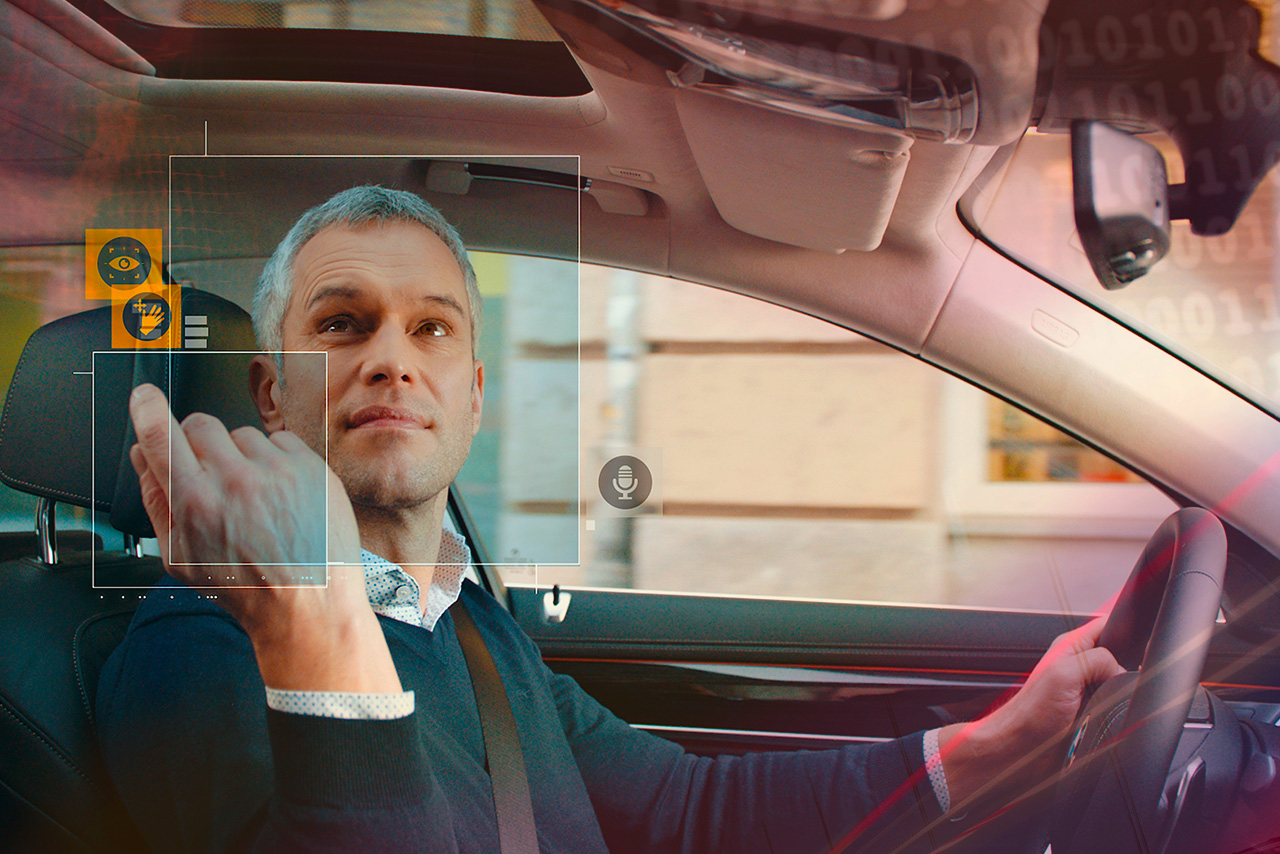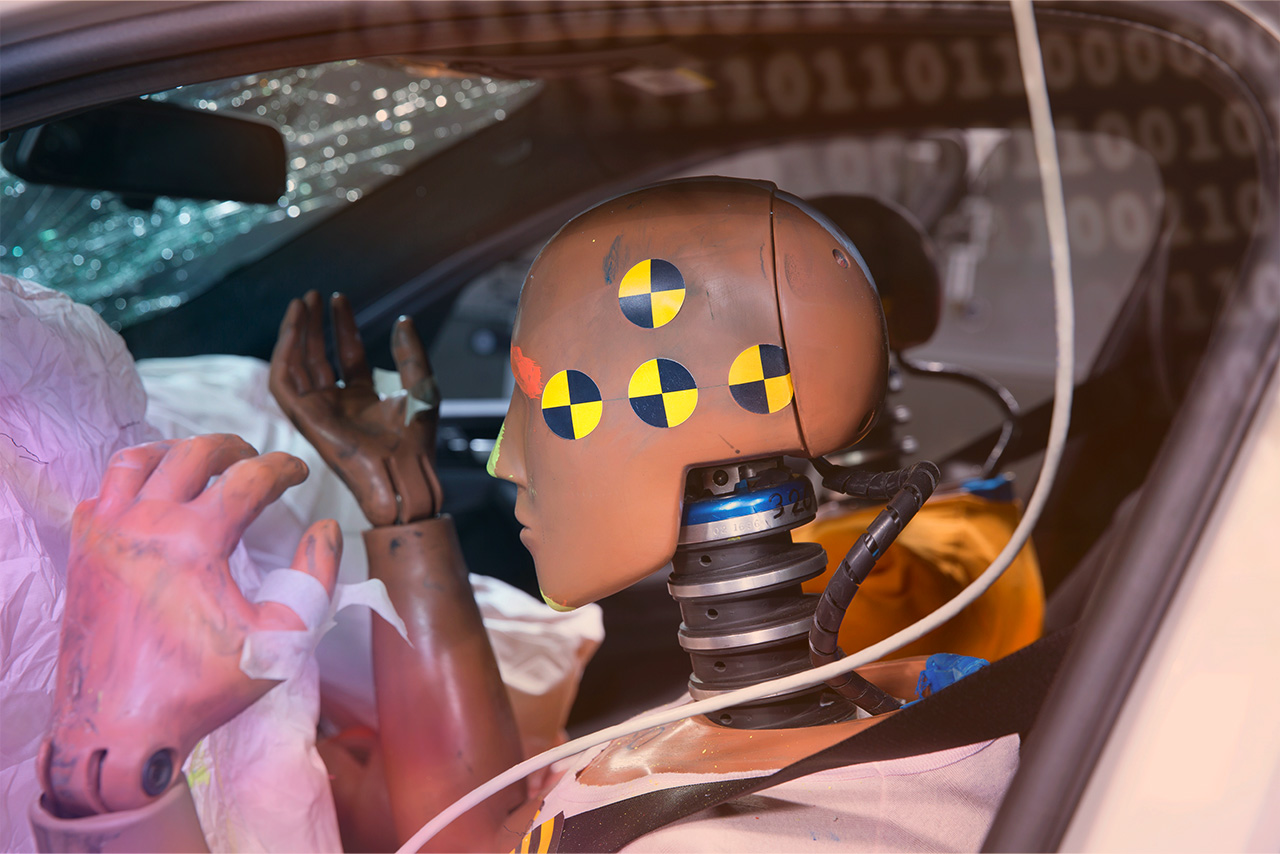Real-world data is necessary for the implementation of new features in the Stochastic Cognitive Model, the parametrisation of the SCM, and the validation of traffic and driver behaviour in the simulation. BMW draws on a wide range of real-world data sources to meet this need.
FIELD OPERATIONAL TESTS.
The BMW Group conducts its own Field Operational Tests (FOT) to collect in-depth real-world traffic data. Participants receive the FOT vehicles for a limited period and are financially compensated for their participation in the study. They are informed about the usage of the data and privacy protection. All participants give consent to further usage of their driving data within BMW. The data is handled by BMW according to the most rigorous data protection standards, seeing as data records also include video footage of the interior and the environment.
Using the data collected in this way, it is possible to analyse gaze behaviour, reaction times and drivers' actions in different real-world scenarios, for example, and use this both to implement new features in the Stochastic Cognitive Model and validate its behaviour.


DRONE DATA.
Utilising drone traffic data for parametrisation and validation of traffic simulations offers notable benefits over conventional in-vehicle data collection techniques. Drone technology can capture high-resolution images and video data, providing detail and accuracy in traffic data collection.
Drone data is used by BMW to analyse microscopic and macroscopic traffic data especially in order to validate the Stochastic Cognitive Model.
SIMULATOR STUDIES.
Simulator studies provide distinct advantages for analysing driver behaviour in a safe and controlled environment. By collecting data on driver reactions to various stimuli such as sudden braking and lane changes, it is possible to gain a better understanding of how drivers behave in different traffic scenarios.
Data from simulator studies is used by BMW to determine the behaviour of drivers in controlled scenarios for the implementation in the Stochastic Cognitive Model.


ACCIDENT DATA.
In-depth accident data such as the German accident database GIDAS provides revealing information about the occurrence and outcome of traffic accidents.
Accident data is used to validate the Stochastic Cognitive Model with regard to the representation of accidents in the simulation.




